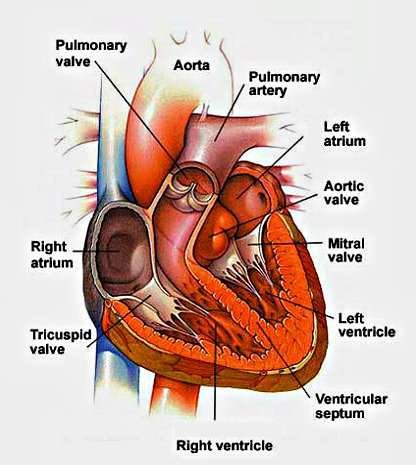Human heart is a key organ in the circulatory system responsible for pumping blood through blood vessels. The heart is found slightly to the left of the center of the chest. As shown in the below diagram, it consists of four chambers: left atrium, right atrium, left ventricle and right ventricle. Multiple valves found in the heart ensure that blood flows only one way through the heart. The lining of the heart consists of three layers: endocardium, myocardium and epicardium.
The blood low in oxygen flows into the right atrium from the superior and inferior vena cavae and further flows into the right ventricle. From here it is pumped into lungs where it releases carbon dioxide and absorbs oxygen. Blood high in oxygen content flows back to the left atrium and then passes through the left ventricle. It is then pumped out via the aorta. Aorta and other arteries transport blood away from the heart. The blood also carries nutrients and waste between the digestive system and various body organs.
The heart is essentially a muscle that contracts at a resting rate of ~72 beats per minute. The lower the heart rate when resting, the better for the health and individual’s longevity. The heart rate may increase during exercising. However, regular exercises ensure that the rate slows down in the longer term.
The heart diagram below lists key parts of the heart.


